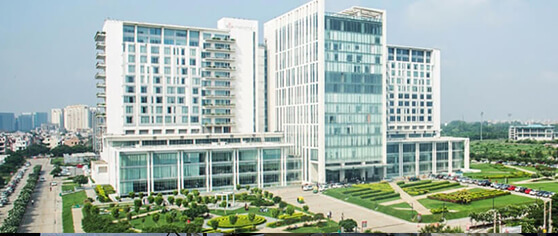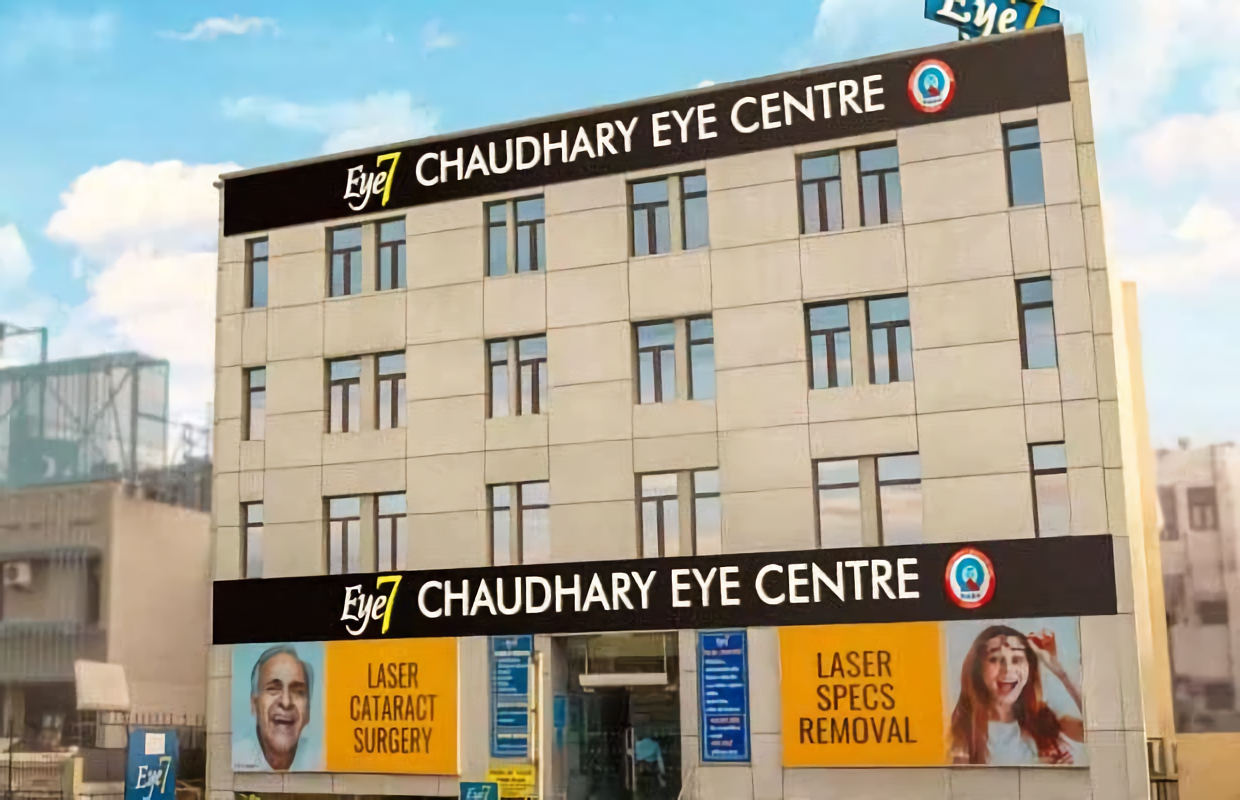CATARACT phaco with Indian Multofocal PCIOL Single Eye cost in India
CATARACT phaco with Indian Multofocal PCIOL:
The most frequent cataract surgery procedure is phacoemulsification. Cataract surgery restores eyesight in individuals whose vision has become clouded due to cataracts, a clouding of the lens of the eye.
Monofocal lenses that compensate for spherical aberration are known as aspheric IOLs. The end result is a lens that, especially at night, will give superior overall vision than regular IOLs. Patients who choose an aspheric IOL can expect the following benefits: Sensitivity to contrast has been improved. Functional eyesight has been improved.
The surgical treatment phacoemulsification is performed to treat cataracts. An ultrasonic probe is utilised to break down or emulsify the built-up protein in the eye lens that causes cataracts during the operation.
Disease Overview:
A cataract is a clouding of the lens of the eye, which is ordinarily clear. Seeing through hazy lenses is similar to looking through a frosty or fogged-up window for persons with cataracts. Cataracts can make it difficult to read, drive a car (particularly at night), or notice the expression on a friend's face due to clouded vision.
The majority of cataracts form slowly and do not affect your vision at first. Cataracts, on the other hand, will obstruct your eyesight over time.
Stronger lighting and spectacles might help you cope with cataracts at first. However, if your vision is obstructing your daily activities, you may need cataract surgery. Cataract surgery is, fortunately, a relatively safe and successful technique.
Disease Signs and Symptoms:
Cataracts can cause the following signs and symptoms:
- Vision that is clouded, hazy, or dull
- Night vision is becoming increasingly challenging.
- Light sensitivity and glare
- For reading and other tasks, a stronger light is required.
- Seeing "halos" surrounding lights is a common occurrence.
- Changes in eyeglass or contact lens prescriptions on a regular basis
- Color fading or yellowing
- In one eye, there is double vision.
At initially, the cloudiness caused by a cataract may only impact a tiny portion of your vision, and you may be completely unaware of any vision loss. The cataract swells in size, clouding more of your lens and distorting the light travelling through it. It's possible that this will result in more obvious symptoms.
Disease Causes
The most common cause of cataracts is a change in the tissue that makes up the lens of the eye due to age or injury. The lens' proteins and fibres begin to break down, giving blurry or unclear vision.
Cataracts can be exacerbated by inherited genetic abnormalities that cause other health issues. Other eye diseases, previous eye surgery, or other disorders such as diabetes can all induce cataracts. Long-term usage of steroid medicines can also lead to cataracts.
The formation of a cataract
A clouded lens is referred to as a cataract. The lens sits behind the coloured portion of your eye (iris). The lens concentrates light entering your eye, resulting in crisp, sharp pictures on the retina (the light-sensitive membrane in your eye that operates similarly to the film in a camera.
The lenses in your eyes get less flexible, less translucent, and thicker as you get older. Proteins and fibres within the lenses break down and clump together as a result of ageing and other medical disorders, clouding the lenses.
The cloudiness grows heavier as the cataract progresses. As light passes through the lens, a cataract scatters and blocks it, preventing a highly defined image from reaching your retina. As a result, your eyesight will get hazy.
Cataracts usually develop in both eyes at the same time, although not always. One eye's cataract may be more advanced than the other, resulting in a disparity in vision between the two.
Cataracts are classified into several categories.
Cataracts that damage the centre of the lens are one form of cataract (nuclear cataracts). At initially, a nuclear cataract may induce increased nearsightedness or even a transient improvement in reading vision. However, as time passes, the lens becomes more thickly yellow, obscuring your eyesight even more.
The lens may even become brown as the cataract advances. Advanced lens yellowing or browning can make it difficult to discriminate between different tones of colour.
Cataracts that impair the lens's edges (cortical cataracts). The first signs of a cortical cataract are white, wedge-shaped opacities or streaks on the lens cortex's outer border. The streaks gradually expand to the centre of the lens, interfering with light flowing through the centre.
Cataracts that impair the lens's rear surface (posterior subcapsular cataracts). A posterior subcapsular cataract begins as a tiny, opaque patch near the rear of the lens, directly in the light path. A posterior subcapsular cataract can create glare or halos surrounding lights at night, interfere with reading vision, and impair vision in bright light. These forms of cataracts develop more quickly than others.
You are born with cataracts (congenital cataracts). Some people are born with cataracts, while others get them later in life. These cataracts might be hereditary, or they could be the result of an intrauterine illness or trauma.
Certain diseases, such as myotonic dystrophy, galactosemia, neurofibromatosis type 2 or rubella, can cause cataracts.
Congenital cataracts don't often cause visual problems, but if they do, they're typically removed as soon as they're discovered.
Risk Factors
Cataracts are caused by a number of factors, including:
- Getting older
- Diabetes
- Excessive sunlight exposure
- Smoking
- Obesity
- Blood pressure that is too high
- Inflammation or damage to the eyes previously
- Previous ophthalmic surgery
- Use of corticosteroid medicines for a long time
- Excessive use of alcoholic beverages
Disease Diagnosis:
Your doctor will examine your eyes and analyse your medical history and symptoms to determine if you have a cataract. Several tests may be performed by your doctor, including:
Acuity test of the eyes. An eye chart is used to assess how well you can read a succession of letters in a visual acuity exam. One of your eyes will be checked at a time while the other is covered. Your eye doctor assesses if you have 20/20 vision or if you have symptoms of impairment using a chart or a viewing gadget with increasingly smaller letters.
Examination using a slit light. Your eye doctor can use a slit light to magnify the structures at the front of your eye.
The microscope is called a slit lamp because it illuminates your cornea, iris, lens, and the area between your iris and cornea with a strong line of light called a slit. The incision allows your doctor to examine these structures in small pieces, making it simpler for him or her to see any minute abnormalities.
Exam of the retina. Your eye doctor will place drops in your eyes to widen your pupils in preparation for a retinal test (dilate). Examining the back of your eyes becomes easy as a result of this (retina). Your eye doctor can inspect your lens for indications of a cataract using a slit lamp or a special gadget called an ophthalmoscope.
Tonometry through applanation. The fluid pressure in your eye is measured using this test. There are a variety of gadgets to choose from.
Disease Treatment
Cataract surgery is the only effective therapy for cataracts when your prescription glasses are no longer able to clear your vision.
When should cataract surgery be considered?
Consult your eye doctor to see if surgery is appropriate for you. When your cataracts begin to compromise your quality of life or interfere with your ability to do routine everyday activities like reading or driving at night, most eye physicians recommend contemplating cataract surgery.
When cataract surgery is appropriate for you, it is up to you and your doctor to decide. Most individuals do not rush to get cataracts removed because they normally do not affect their eyes. However, cataracts can worsen more quickly in those who have diabetes, high blood pressure, or obesity.
If you decide to undergo cataract surgery later, delaying the treatment won't effect how well your eyesight improves. Take the time to discuss the advantages and disadvantages of cataract surgery with your doctor.
If you decide not to have cataract surgery right away, your eye doctor may advise you to have regular check-ups to assess how your cataracts are going. The frequency with which you visit your eye doctor is determined by your circumstances.
surgery to remove cataracts
The clouded lens is removed and replaced with a clear prosthetic lens during cataract surgery. The intraocular lens, or artificial lens, is placed in the same spot as your natural lens. It will always be a part of your eye.
Other eye disorders prevent some people from wearing an artificial lens. After the cataract is removed, eyesight can be repaired using eyeglasses or contact lenses in certain cases. Cataract surgery is usually performed as an outpatient procedure, which means you won't have to stay in the hospital afterward. Your eye doctor will use a local anaesthetic to numb the region surrounding your eye during cataract surgery, but you will normally remain awake.
Cataract surgery is typically safe, however infection and bleeding are possible after effects. Retinal detachment is more likely after cataract surgery.
For a few days after the surgery, you will be in pain. In most cases, healing takes a few weeks.
If you require cataract surgery in both eyes, your doctor will arrange surgery to remove the cataract in the second eye once the first has recovered.
Country wise cost comparison for CATARACT phaco with Indian Multofocal PCIOL Single Eye:
| Country | Cost |
|---|---|
| India | $922 |
Treatment and Cost
6
Total Days
In Country
- 1 Day in Hospital
- 2 No. Travelers
- 5 Days Outside Hospital
Treatment cost starts from
$970
Popular Hospital & Clinic
Featured Hospital
11 Hospitals
Types of CATARACT phaco with Indian Multofocal PCIOL Single Eye in Fortis Memorial Research Institute and its associated cost
| Treatment Option | Approximate Cost Range (USD) |
|---|---|
| No Treatment option added | |
- Address: Sector - 44, Opp. HUDA City Center,Gurgaon, Haryana - 122002, India
- Facilities related to Fortis Memorial Research Institute: Private Rooms, Translator, Nursery / Nanny Services, Airport Pick up, Personal Assistance / Concierge, Free Wifi, Local Tourism Options, International Cuisine, Phone in Room, Private Driver / Limousine Services, Post operative followup, Mobility Accessible Rooms, Online Doctor Consultation, Air Ambulance, Religious Facilities, Rehabilitation, Cafe, TV in room, Car Hire, Health Insurance Coordination,
50
DOCTORS IN 35 SPECIALITIES
20+
FACILITIES & AMENITIES
Types of CATARACT phaco with Indian Multofocal PCIOL Single Eye in BLK-Max Super Speciality Hospital and its associated cost
| Treatment Option | Approximate Cost Range (USD) |
|---|---|
| No Treatment option added | |
- Address: Pusa Road, New Delhi-110005
- Facilities related to BLK-Max Super Speciality Hospital: Private Rooms, Translator, Nursery / Nanny Services, Personal Assistance / Concierge, Free Wifi, International Cuisine, Phone in Room, Private Driver / Limousine Services, Post operative follow-up, Mobility Accessible Rooms, Rehabilitation, Cafe, TV in room, Car Hire, Health Insurance Coordination
17
DOCTORS IN 33 SPECIALITIES
20+
FACILITIES & AMENITIES
Types of CATARACT phaco with Indian Multofocal PCIOL Single Eye in Max Super Speciality Hospital and its associated cost
| Treatment Option | Approximate Cost Range (USD) |
|---|---|
| No Treatment option added | |
- Address: Max Super Speciality Hospital No. 1, 2, Press Enclave Road, Mandir Marg, Saket Institutional Area, Saket, New Delhi, Delhi, 110017, India
- Facilities related to Max Super Speciality Hospital:
53
DOCTORS IN 34 SPECIALITIES
20+
FACILITIES & AMENITIES
Types of CATARACT phaco with Indian Multofocal PCIOL Single Eye in Fortis Escorts Heart Institute and its associated cost
| Treatment Option | Approximate Cost Range (USD) |
|---|---|
| No Treatment option added | |
- Address: Okhla Road,New Delhi - 110 025 (INDIA)
- Facilities related to Fortis Escorts Heart Institute: Private Rooms, Translator, Nursery / Nanny Services, Personal Assistance / Concierge, Free Wifi, International Cuisine, Phone in Room, Private Driver / Limousine Services, Post operative follow-up, Mobility Accessible Rooms, Rehabilitation, Cafe, TV in room, Car Hire, Health Insurance Coordination
19
DOCTORS IN 33 SPECIALITIES
20+
FACILITIES & AMENITIES
Types of CATARACT phaco with Indian Multofocal PCIOL Single Eye in PSRI Hospital and its associated cost
| Treatment Option | Approximate Cost Range (USD) |
|---|---|
| No Treatment option added | |
- Address: Press Enclave Marg, J Pocket, Phase II, Sheikh Sarai, New Delhi, Delhi 110017
- Facilities related to PSRI Hospital: Private Rooms, Translator, Nursery / Nanny Services, Personal Assistance / Concierge, Free Wifi, International Cuisine, Phone in Room, Private Driver / Limousine Services, Post operative follow-up, Mobility Accessible Rooms, Rehabilitation, Cafe, TV in room, Car Hire, Health Insurance Coordination
8
DOCTORS IN 33 SPECIALITIES
20+
FACILITIES & AMENITIES
Types of CATARACT phaco with Indian Multofocal PCIOL Single Eye in Fortis Flt. Lt. Rajan Dhall Hospital, Vasant Kunj, Delhi and its associated cost
| Treatment Option | Approximate Cost Range (USD) |
|---|---|
| No Treatment option added | |
- Address: Fortis Flt. Lt. Rajan Dhall Hospital, Aruna Asaf Ali Marg, Pocket 1, Sector B, Vasant Kunj, New Delhi, Delhi 110070
- Facilities related to Fortis Flt. Lt. Rajan Dhall Hospital, Vasant Kunj, Delhi: Private Rooms, Translator, Nursery / Nanny Services, Personal Assistance / Concierge, Free Wifi, International Cuisine, Phone in Room, Private Driver / Limousine Services, Post operative follow-up, Mobility Accessible Rooms, Rehabilitation, Cafe, TV in room, Car Hire, Health Insurance Coordination
46
DOCTORS IN 34 SPECIALITIES
20+
FACILITIES & AMENITIES
Types of CATARACT phaco with Indian Multofocal PCIOL Single Eye in MAX Super Speciality hospital, Patpadganj Delhi and its associated cost
| Treatment Option | Approximate Cost Range (USD) |
|---|---|
| No Treatment option added | |
- Address: 108A, Indraprasth Extension, Patpadganj, New Delhi- 110092, India
- Facilities related to MAX Super Speciality hospital, Patpadganj Delhi: Private Rooms, Translator, Nursery / Nanny Services, Personal Assistance / Concierge, Free Wifi, International Cuisine, Phone in Room, Private Driver / Limousine Services, Post operative follow-up, Mobility Accessible Rooms, Rehabilitation, Cafe, TV in room, Car Hire, Health Insurance Coordination
52
DOCTORS IN 33 SPECIALITIES
20+
FACILITIES & AMENITIES
Types of CATARACT phaco with Indian Multofocal PCIOL Single Eye in Medanta-The Medicity, Gurgaon and its associated cost
| Treatment Option | Approximate Cost Range (USD) |
|---|---|
| No Treatment option added | |
- Address: CH Baktawar Singh Road, Sector 38, Gurugram, Haryana 122001
- Facilities related to Medanta-The Medicity, Gurgaon: TV in room Private rooms, Free Wifi, Phone in Room, Mobility accessible rooms, Family accommodation, Laundry, Welcome Safe in the room, Nursery / Nanny services. Dry cleaning, Personal assistance / Concierge Religious facilities, Fitness Spa and wellness Café, Business Centre, Shop, Dedicated smoking areas, Beauty Salon, Special offer for group stays, Parking available, Health insurance coordination, Medical travel insurance, Foreign currency exchange, ATM, Credit Card, Debit Card, Net banking, Diet on Request, Restaurant, International Cuisine, Treatment Related Medical records transfer, Online doctor consultation, Rehabilitation, Pharmacy, Document legalization, Post operative follow-up, Language Interpreter, Translation services, Transportation, Airport pickup, Local tourism options, Local transportation booking, Visa / Travel office, Car Hire, Private driver / Limousine services, Air ambulance
52
DOCTORS IN 33 SPECIALITIES
20+
FACILITIES & AMENITIES
Types of CATARACT phaco with Indian Multofocal PCIOL Single Eye in Indraprastha Apollo Hospitals, New Delhi and its associated cost
| Treatment Option | Approximate Cost Range (USD) |
|---|---|
| No Treatment option added | |
- Address: Mathura Rd, Jasola Vihar, New Delhi, Delhi 110076
- Facilities related to Indraprastha Apollo Hospitals, New Delhi: Private Rooms, Translator, Nursery / Nanny Services, Personal Assistance / Concierge, Free Wifi, International Cuisine, Phone in Room, Private Driver / Limousine Services, Post operative follow-up, Mobility Accessible Rooms, Rehabilitation, Cafe, TV in room, Car Hire, Health Insurance Coordination
37
DOCTORS IN 33 SPECIALITIES
20+
FACILITIES & AMENITIES
Types of CATARACT phaco with Indian Multofocal PCIOL Single Eye in Eye7 Chaudhary Eye Centre and its associated cost
| Treatment Option | Approximate Cost Range (USD) |
|---|---|
| No Treatment option added | |
- Address: 34, Lajpat Nagar IV, Ring RoadNew Delhi, 110024, India
- Facilities related to Eye7 Chaudhary Eye Centre: Private Rooms, Translator, Nursery / Nanny Services, Personal Assistance / Concierge, Free Wifi, International Cuisine, Phone in Room, Private Driver / Limousine Services, Post operative follow-up, Mobility Accessible Rooms, Rehabilitation, Cafe, TV in room, Car Hire, Health Insurance Coordination
3
DOCTORS IN 10 SPECIALITIES
20+
FACILITIES & AMENITIES














